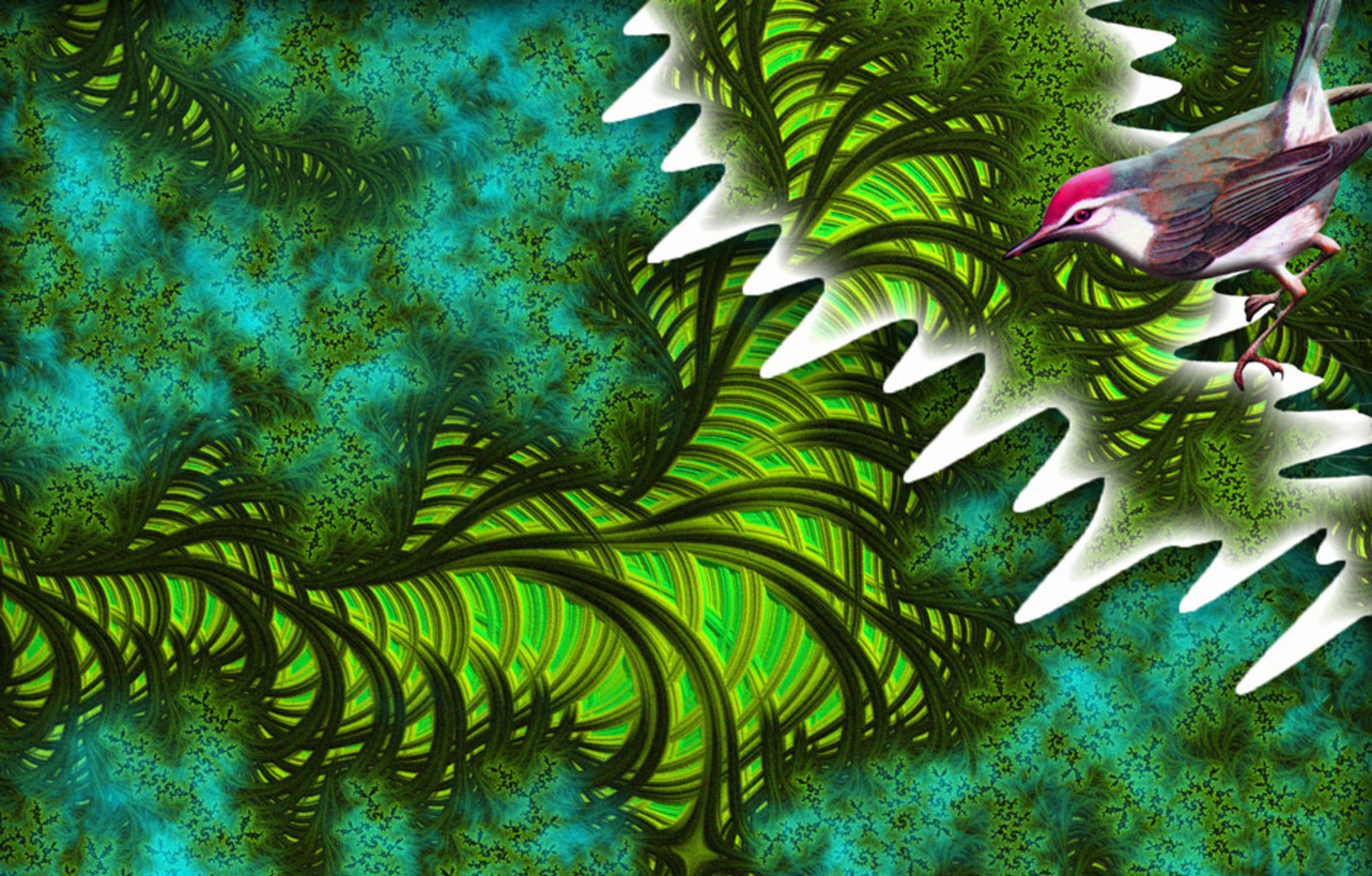
Dis-track-ed Vol. 6: Disturbed Nature
Illustration by Inka Gerbert
In her monthly column, Ruth Saxelby pulls on hidden threads weaving through modern music. In this edition, the call of nature found in tracks by Ekoplekz, Total Freedom, LAFAWNDAH and more.
I first heard Sueño Latino’s “Sueño Latino” on a dancefloor in Leeds circa 1999, a decade on from its release. While I’d later learn it was based on Manuel Göttsching’s almost hour-long opus E2-E4, one key thing the Italo house band added was an exotic bird call. That warble was transportive, blurring the boundary between my material and sensate surroundings: I could taste sea salt on my lips, feel sun on my arms.
Sounds that recall the natural world are like shortcuts to sensory memories, rustling a thousand layers. For humanity’s relationship with nature is a complicated one—with one hand we romanticize it and with the other destroy—and that duality makes for rich sonic territory. What’s more, whether they are synthesized or sampled, the sounds of the natural world are wildly symbolic—they represent that which humans often suppress: fear, desire, chaos.
While there’s something blindly utopian about how ambient and new age music approached the natural world—it’s practically impossible not to think of sleep aid tapes featuring lapping waves or whale song—more interesting references in contemporary music recognize its duality. The neigh of a horse in Light Asylum’s “A Certain Person” set an urgent, almost desperate, tone that heightened the song’s ecstatic release.
More recently a seam of new music that has an ambivalent relationship towards nature has revealed itself. Gone is the nature-as-utopia of previous decades, but neither is it wholly dystopian. Instead the presence of life within the track acts almost as a witness; the mood is ominous, the gaze unwavering. Here are a handful of musicians and producers using the natural world to get at the surreality of contemporary life.
LAFAWNDAH “Chili”
There’s something wild about French-Iranian singer/producer LAFAWNDAH’s debut single “Chili”, co-produced by Porto-based pal Garagembanda. Drawing on zouk and techno, it sways and burns—and births a new kind of ritual club music. Swarming around the beat, often threatening to engulf it, is the fiery roar of flying insects. They set a scene of life beyond the borders of the song, beckoning the way into a new world.
Ekoplekz “Coalpit Heath”
The music of Bristol-based experimental producer Ekoplekz has always resisted easy classification but his forthcoming new album Unfidelity on Planet Mu is perhaps his most primordial soup-like. Rain falls on album track “Coalpit Heath”, bouncing off uneven surfaces and setting off percussive echoes that occasionally ripple into melodies before sliding back underneath the surface like a dead-eyed eel.
Ajukaja & Andrevski “Rare Birds”
On a lighter note, Estonian duo Ajukaja & Andrevski conjure up a half-conscious dream world on their Rare Birds 12-inch released on Jon Rust’s Levels label last month. Here nature is evoked rather than sampled: synthesized bird calls, strangely shaped yet perfectly on key, skate across the open spaces of this after-hours number.
Etat de Siege “V2”
Bugs both real and digital appear to scurry through “V2” by Etat de Siege, a contributor to the e-cigarette inspired VAPECRU: Cloud Chasing Vol. 1 compiled by Gatekeeper’s Aaron David Ross. It flits from compelling to unnerving in the blink of an eye, with more than a wink of nanotechnology’s grey goo theatrics about it.
Total Freedom & Dutch E Germ’s runway soundtrack for Hood By Air
L.A. DJ/producer and Fade To Mind associate Total Freedom provided this bristling soundtrack to New York fashion label Hood By Air a couple of weeks back, weaving warped pop loops around an original score by (former Gang Gang Dance drummer) Tim DeWit aka Dutch E Germ. A dog growling a warning cues up the mix—and later returns in a barking frenzy—imbuing proceedings with a compelling tension. ~
For more editions of Dis-track-ed, click here.
Published February 27, 2014. Words by ruthsaxelby.
